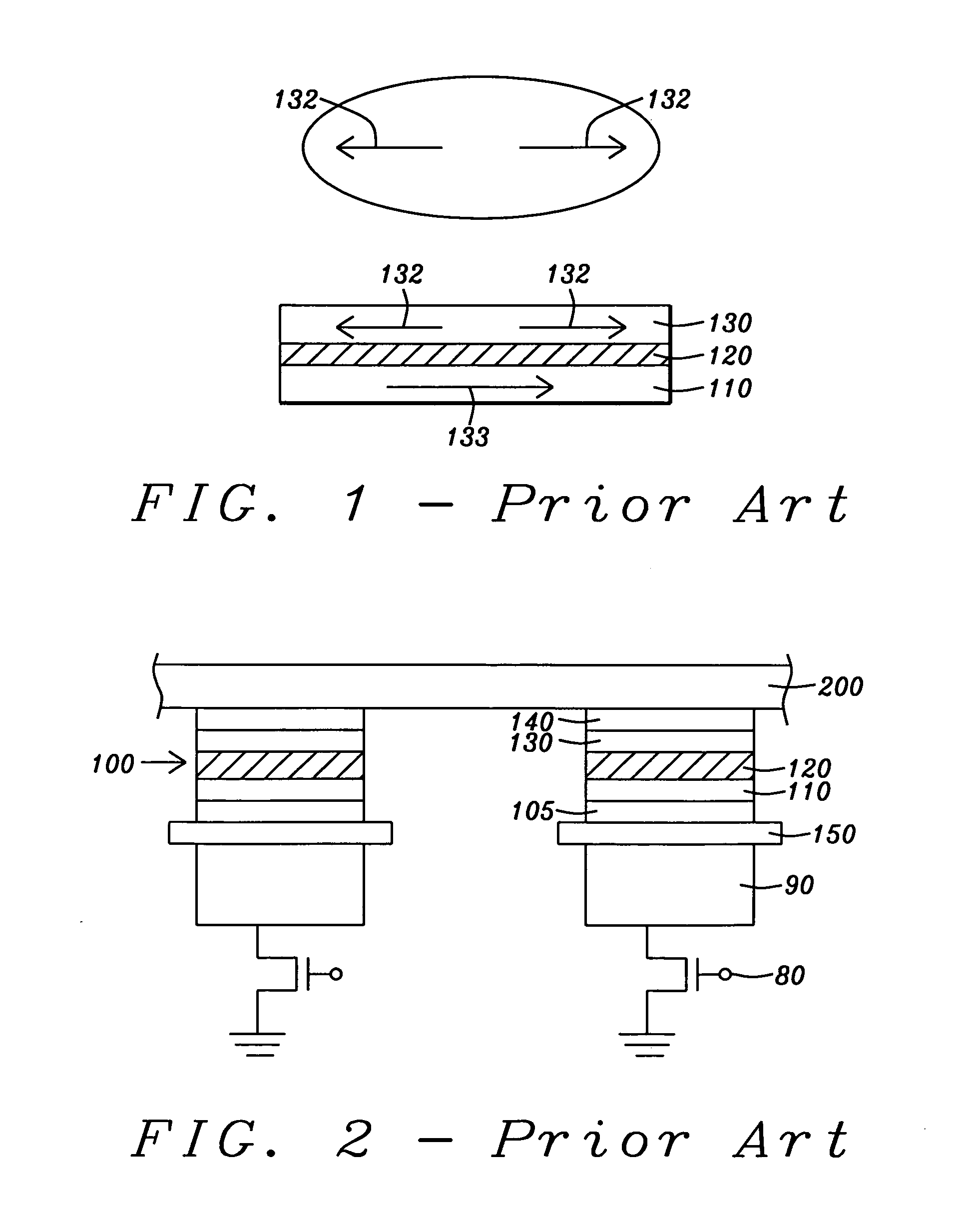Pulse field assisted spin momentum transfer MRAM design
a technology of momentum transfer and pulse field, applied in information storage, static storage, digital storage, etc., to achieve the effect of high-stable c-mode switching
- Summary
- Abstract
- Description
- Claims
- Application Information
AI Technical Summary
Benefits of technology
Problems solved by technology
Method used
Image
Examples
first embodiment
[0030]Referring to schematic FIG. 3a, there is shown an MRAM configuration corresponding to the present invention. The figure shows a vertical cross-sectional view of four adjacent, identical MTJ cells formed in a STT configuration and operating in accord with the STT mode of operation. Only two cells (100) can be seen because of the perspective. Each of two facing cells is positioned beneath a common current carrying line (200), the bit line. Vertically separated and insulated from the bit line and the MTJ cells, there are two word lines (300) that are directed transversely to the plane of the figure and shown in vertical cross-section. Current in the word lines can flow in either direction as shown by the circled dots (out of plane) and circled crosses (into plane), but always so as to assist the magnetization switching, as will be shown below.
[0031]Going vertically downward in either cell, there is first shown a capping layer (140) contacting the bit line and protecting the cell,...
second embodiment
[0034]Referring now to schematic FIG. 4a, there is shown an MRAM configuration corresponding to the present invention. The figure shows a vertical cross-sectional view of four adjacent, identical MTJ cells (100) formed in a STT configuration and operating in accord with the STT mode of operation. Only two cells can be seen because of the perspective. Each of two facing cells is positioned beneath a common current carrying line (200), the bit line. Vertically separated from the bit line, and directly above it, there is shown a word line (300) that is directed parallel to the bit line. The perspective of the figure shows only one bit line and one word line, although an identical arrangement, or a multiplicity of such arrangements, as that shown could be positioned behind or in front of the illustration.
[0035]Going vertically downward in either cell, there is first shown a capping layer (140) contacting the bit line and protecting the cell, beneath the capping layer there is shown a ma...
PUM
 Login to View More
Login to View More Abstract
Description
Claims
Application Information
 Login to View More
Login to View More - R&D
- Intellectual Property
- Life Sciences
- Materials
- Tech Scout
- Unparalleled Data Quality
- Higher Quality Content
- 60% Fewer Hallucinations
Browse by: Latest US Patents, China's latest patents, Technical Efficacy Thesaurus, Application Domain, Technology Topic, Popular Technical Reports.
© 2025 PatSnap. All rights reserved.Legal|Privacy policy|Modern Slavery Act Transparency Statement|Sitemap|About US| Contact US: help@patsnap.com



